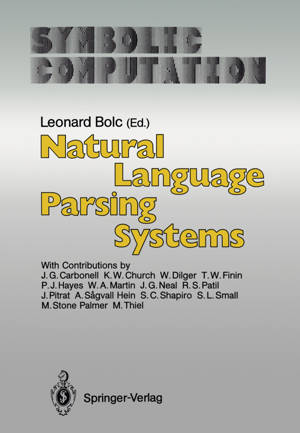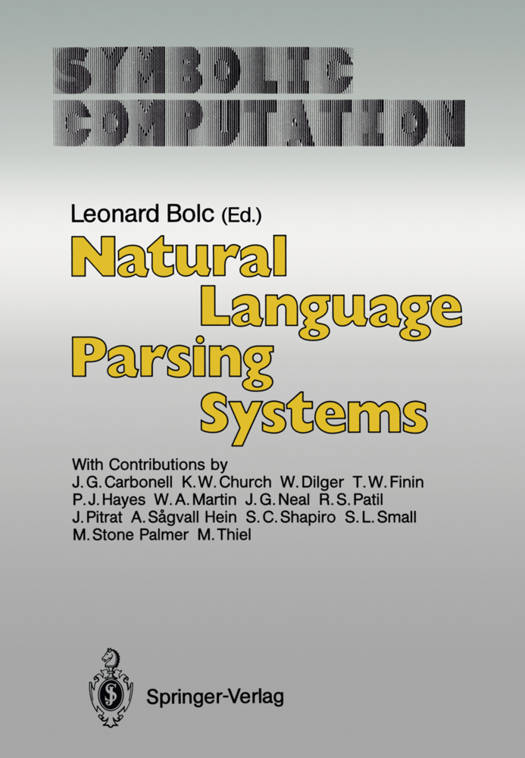
Je cadeautjes zeker op tijd in huis hebben voor de feestdagen? Kom langs in onze winkels en vind het perfecte geschenk!
- Afhalen na 1 uur in een winkel met voorraad
- Gratis thuislevering in België vanaf € 30
- Ruim aanbod met 7 miljoen producten
Je cadeautjes zeker op tijd in huis hebben voor de feestdagen? Kom langs in onze winkels en vind het perfecte geschenk!
- Afhalen na 1 uur in een winkel met voorraad
- Gratis thuislevering in België vanaf € 30
- Ruim aanbod met 7 miljoen producten
Zoeken
Natural Language Parsing Systems
€ 147,95
+ 295 punten
Omschrijving
Up to now there has been no scientific publication on natural lan- guage research that presents a broad and complex description of the current problems of parsing in the context of Artificial Intelli- gence. However, there are many interesting results from this domain appearing mainly in numerous articles published in pro- fessional journals. In view of this situation, the objective of this book is to enable scientists from different countries to present the results of their research on natural language parsing in the form of more detailed papers than would be possible in professional jour- nals. This book thus provides a collection of studies written by well- known scientists whose earlier publications have greatly contributed to the development of research on natural language parsing. Jaime G. Carbonell and Philip J. Hayes present in their paper "Robust Parsing Using Multiple Construction-Specific Strategies" two small experimental parsers, implemented to illustrate the advantages of a multi-strategy approach to parsers, with strategies selected according to the type of construction being parsed at any given time. This presentation is followed by the description of a parsing algorithm, integrating some of the best features of the two smaller parsers, including case-frame instantiation and partial pat- tern-matching strategies.
Specificaties
Betrokkenen
- Uitgeverij:
Inhoud
- Aantal bladzijden:
- 367
- Taal:
- Engels
- Reeks:
Eigenschappen
- Productcode (EAN):
- 9783642830327
- Verschijningsdatum:
- 8/12/2011
- Uitvoering:
- Paperback
- Formaat:
- Trade paperback (VS)
- Afmetingen:
- 170 mm x 244 mm
- Gewicht:
- 616 g

Alleen bij Standaard Boekhandel
+ 295 punten op je klantenkaart van Standaard Boekhandel
Beoordelingen
We publiceren alleen reviews die voldoen aan de voorwaarden voor reviews. Bekijk onze voorwaarden voor reviews.








